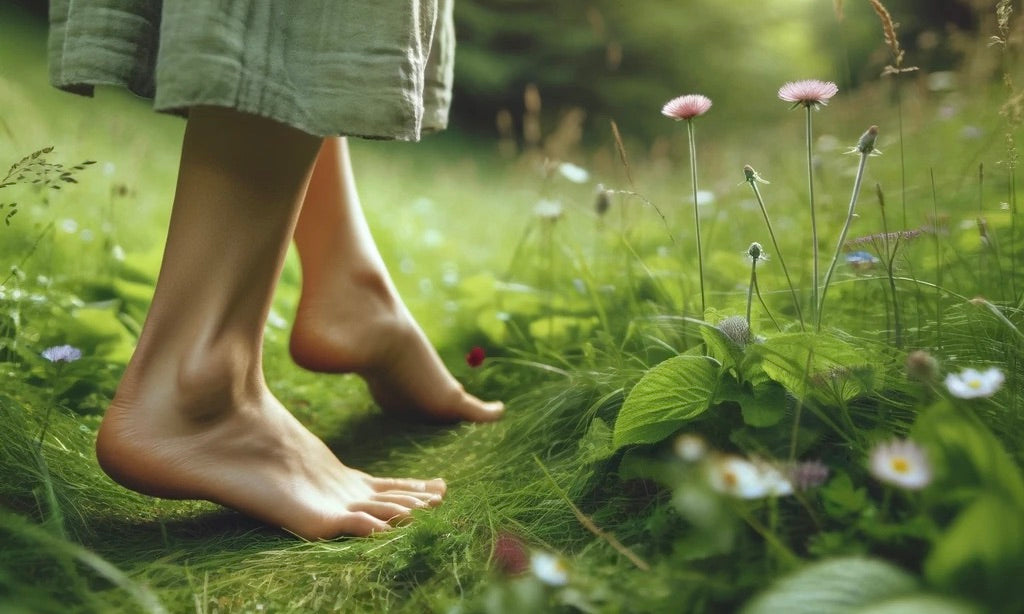
Explore Grounding: Health Benefits, Techniques, and Barefoot Alternatives
|
|
Time to read 3 min
|
|
Time to read 3 min
Grounding, also known as earthing, is the practice of reconnecting to the earth’s natural electric charge. It involves direct skin contact with the ground, such as walking barefoot on the grass, sand, dirt, or a conductive surface that is in direct contact with the earth. The principle behind grounding is that the earth maintains a negative electrical potential on its surface, and by connecting to it, our bodies naturally discharge excess electrical charge, which can reestablish a stable internal bioelectrical environment.
The benefits of grounding are supported by a growing body of research that suggests a positive impact on overall health. Here’s what some studies have found:
People choose to ground for various reasons, primarily to improve their health and well-being. Grounding is seen as a way to:
Grounding is rooted in the science of electricity and its effects on the human body. The earth's surface is constantly being replenished with a vast supply of electrons, thanks to a global atmospheric electrical process. When we make direct contact with the ground, like walking barefoot, these electrons flow into our bodies. This influx of natural electrical energy helps restore and maintain our body’s natural electrical balance, which is the state our ancestors evolved in.
Grounding can be practiced in several simple ways:
Barefoot shoes are designed to mimic the natural shape and minimalist style of bare feet while providing a thin protective layer against environmental hazards. They are made with conductive materials that maintain a connection between the foot and the earth, thereby offering an alternative to going fully barefoot, especially in environments where it’s not practical to do so.
Going barefoot allows the body to absorb the earth’s essential electrons more effectively than most types of footwear. Going barefoot in nature is optimal for full earthing benefits. However, barefoot shoes can be a good alternative, particularly for people living in urban environments where walking barefoot is more difficult to do. The key is consistency in connecting with the earth’s surface, whether directly by being barefoot or using tools like barefoot shoes.
"After incorporating grounding into my daily routine, primarily through walking barefoot and occasionally using barefoot shoes, I've noticed a remarkable improvement in my energy levels and a significant reduction in my stress. Barefoot shoes have been a game-changer for maintaining my connection to the earth, especially during the cold months or when I'm in urban areas where walking barefoot isn't practical. This simple practice has truly enhanced my overall well-being." - Monica R.
Many individuals who practice grounding regularly report a significant improvement in their sense of well-being. Some describe feeling more "grounded" and less prone to anxiety and insomnia. Others note improvements in chronic pain, saying that regular grounding has helped them reduce their medication intake. These anecdotes, while not scientifically verified, suggest potential areas for further research.
Grounding or earthing presents a fascinating way to potentially enhance your health through something as simple as reconnecting with the earth. Whether you choose to go barefoot or use barefoot shoes, the objective is the same: to reconnect with the natural electric fields of the earth. As we continue to explore the benefits of grounding, incorporating these practices may just be the key to a healthier life in tune with our natural environment.
To deepen your understanding and perhaps start your own earthing practice, you might want to explore further through these informative links:
Grounding might just be the missing piece in your quest for better health and well-being
